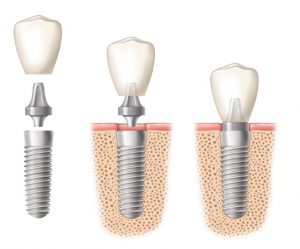Header logo
header top contact widget
Blog Archives
Recent Posts
Categories
Archives
- September 2024
- August 2024
- July 2024
- June 2024
- May 2024
- April 2024
- March 2024
- February 2024
- January 2024
- December 2023
- November 2023
- October 2023
- September 2023
- August 2023
- July 2023
- June 2023
- May 2023
- April 2023
- March 2023
- February 2023
- January 2023
- December 2022
- November 2022
- October 2022
- September 2022
- August 2022
- July 2022
- June 2022
- May 2022
- April 2022
- March 2022
- February 2022
- January 2022
- December 2021
- November 2021
- October 2021
- September 2021
- August 2021
- July 2021
- June 2021
- May 2021
- April 2021
- March 2021
- February 2021
- January 2021
- December 2020
- November 2020
- October 2020
- September 2020
- August 2020
- July 2020
- June 2020
- May 2020
- April 2020
- March 2020
- February 2020
- January 2020
- December 2019
- November 2019
- October 2019
- September 2019
- August 2019
- July 2019
- June 2019
- May 2019
- April 2019
- March 2019
- February 2019
- January 2019
- December 2018
- November 2018
- October 2018
- September 2018
- August 2018
- July 2018
- June 2018
- May 2018
- April 2018
- March 2018
- February 2018
- January 2018
- December 2017
- November 2017
- October 2017
- September 2017
- August 2017
- July 2017
- June 2017
- May 2017
- April 2017
- March 2017
- February 2017
- January 2017
- December 2016
- November 2016
- October 2016
- September 2016
- August 2016
- July 2016
- June 2016
- May 2016
- April 2016
- March 2016
- February 2016
- January 2016
- December 2015
- November 2015
- October 2015
- September 2015
- August 2015
- July 2015
- June 2015
- May 2015
- April 2015
- March 2015
- February 2015
- January 2015
- December 2014
- November 2014
- October 2014
- September 2014
- August 2014
- July 2014
- June 2014
- May 2014
- April 2014
- March 2014
- February 2014
- January 2014
- December 2013
- November 2013
- October 2013
- September 2013
- August 2013
- July 2013
- June 2013
- May 2013
- April 2013
- March 2013
- February 2013
- January 2013
- December 2012
- November 2012
- October 2012
- September 2012
- August 2012
- July 2012
- June 2012
Men & Oral Well-Being
Posted on Oct 26, 2016 by William J. Claiborne, DDS MS
As a male, I’ve accepted the fact that there are certain things men don’t do as well as women. Actually, there is probably a long list! And, while some things like being slack when it comes to vacuuming and making the bed can be chalked up to ‘guys being guys,’ I know that other things are far more important; one of these being taking care of our oral hygiene.
Studies have shown that men, in general, are not doing a very good job when it comes to taking care of their mouths. It seems that men are less regular when it comes to caring for their oral health, less likely to have regular check-ups and neglect their oral health more often. Men are also less likely to visit the dentist when a problem does occur and tend to go only to resolve pain.
Males also brush their teeth less than twice a day, according to statistics. This leaves them means more likely to develop periodontal (gum) disease. On average, men will lose more than 5 teeth by the age of 72. Those who smoke will lose an average of 12 teeth by that age.
And, for men who wear a partial denture, they can expect higher levels of oral bacterial, which leads to greater challenges when it comes to preventing further tooth loss. This is because the material of a denture or partial that mimics the gums is porous. This provides a warm, dark and moist environment that is a perfect breeding ground for oral bacteria.
While many denture and partial wearers soak their appliance overnight, this merely delays the growth of oral bacteria, not halt it. The rapid reproduction of bacteria revs back up as soon as the appliance is back in a mouth that is already bacteria-laden.
For men with exposed tooth roots, this creates a higher risk for cavities. Aging, over-zealous brushing and a misaligned bite can cause gum tissue to pull away from teeth. Over time, the darker, more sensitive portions of the tooth are exposed. This area is actually the root section of the tooth. While this detracts from the appearance of your smile, it also exposes a portion of the tooth that is more susceptible to bacteria. This can increase the risk for cavities.
Regardless of gender, adults who are on medications that have a drying effect on the mouth are more apt to have gum disease and cavities. Saliva removes oral bacteria and helps to reduce bacteria accumulation. When salivary flow is inadequate to keep the mouth well-rinsed, the risk for cavities increases. Dry mouth also increases your potential for bad breath.
Genetics on its own can leave both men and women more susceptible to the problems associated with oral bacteria. While all people have bacteria in their bodies, two kinds (referred to as SM and LB) are especially harmful to teeth. Those who have higher levels have a naturally greater risk for tooth decay.
It is important to maintain a good oral hygiene routine, whether male or female. At home, brush with a fluoride toothpaste twice daily, floss daily and be committed to your 6-month cleanings to avoid problems and catch those that arise early.
We want to help you avoid problems, which will save you time and money and help you avoid a life in dentures. Call (828) 274-9440 to schedule a consultation to begin.
Dental Fear Can Lead To Complex, Costly Problems
Posted on Oct 21, 2016 by William J. Claiborne, DDS MS
It is estimated that over 70% of American adults have some level of dental fear. Some are so afraid of dental visits that it interferes with their ability to have a healthy, confident smile. This is unfortunate, especially because people who feel good about their smile tend to smile more often. And, research has shown that smiling boosts one’s mood, self-esteem and self-confidence.
For those who have dental fears, achieving and maintaining a healthy, confident smile is a challenge. In many cases, we see patients who have developed periodontal (gum) disease or lost natural teeth because fear kept them from dental care. We understand that perceived pain can be just as real to some as actual pain. This is why we offer a number of comfort options, including Oral and I.V. Sedation (twilight sleep).
Both forms of sedation help patients relax before and throughout treatment while erasing most or all memory of the procedure afterward. With the help of sedation, many procedures are completed in just one or two visits.
Although some procedures require more than one appointment, our technology helps reduce treatment time while increasing your comfort level. For lengthier procedures, some patients combine several appointments into just one or two. With the help of sedation, they can enjoy total relaxation with a pleasant recovery afterward.
Not only does dental fear create delays in treatment for many, it can greatly increase the costs required for more complex treatment. For example, your 6-month exams and cleanings are structured to help you avoid problems in the first place and catch problems while they’re still small. Keeping gums healthy through regular care is a small investment when compared to the expenses to treat gum disease.
Today’s dentistry, in the right hands, should not hurt. In our office, we take great pride that many new patients with dental fear find that sedation is not necessary after a visit or so. This comes from developing a relationship of trust and helping the patient to know our commitment is to their comfort at every visit.
Call 828-274-9440 to schedule an examination. If fear has kept you from regular dental visits, you likely have some form of gum disease. If not treated, this will only worsen. Gum disease is the nation’s leading cause of adult tooth loss. Plus, the potent bacteria of gum disease has been shown to trigger systemic inflammation. This can create serious health problems far beyond the mouth.
Understanding Dental Implants
Posted on Oct 17, 2016 by William J. Claiborne, DDS MS
Although dental implants are nothing new to the dental field, there is still a bit of confusion as to their makeup. This is likely because dental implants come in a wide variety of shapes and sizes, each to accommodate specific needs.
For example, some implant systems are designed to support non-removable teeth while others may support teeth that are detachable for cleaning. Some implants support one or several teeth while others are designed for placement in minimum bone mass.
While dental implants have one of the highest of all implant-in-bone success rates (including that of knees and hip joints), having a successful outcome can greatly depend on having the proper implant selected for you. This can occur when you rely on an experienced dental specialist who is trained in the diagnosis and placement of all types.
To help clear up confusion about how implants work, it is important to understand the components. Below is an explanation of what dental implants are and how they work.
• Dental Implants are actually replacements for tooth roots. The implanted portion is placed in your jaw bone where a tooth root was once held.
• The ‘implant’ is not the tooth. It will help to hold the tooth (referred to as the ‘restoration’) but its primary function is to serve as the anchor for an attached tooth, or a replacement tooth root. By being placed in the jaw bone, just as a natural tooth root, the implant can support the attached tooth with a firm foundation for optimal stability.
• The implant becomes anchored in the jaw bone through a process known as ‘osseo-integration.’ The word ‘osseo’ refers to bone, and the integration process is like a rope tied around a tree branch. In time, the branch grows around the rope. Osseo-integration is like this but occurs at a much more rapid pace.
• Once the implant has become secured by the bone, a post is inserted into the hollow center of the implant. The replacement tooth (or teeth) is attached to this post. You new tooth looks, feels and functions like the natural tooth once positioned there.
• An implant is not always necessary for each missing tooth. In some instances, one implant can hold two or a bridge of teeth. Several strategically-placed implants can also support a full arch of teeth in many cases.
Regardless of the type of implant placed, it is important to remember that implants do occasionally fail. This can be due to clenching or grinding teeth. Smoking complicates and delays the healing process and can also contribute to implant failure. If infection sets in and reaches the implanted portion, the implant may need to be removed so the treatment can resolve the problem.
A major benefit of dental implants is their lifespan. Implants are designed to last your lifetime. Too, dental implants do not decay, will never need a root canal and do not rely on support from neighboring teeth. The best thing, however, is that dental implants restore your ability to eat with stability, chew comfortably, laugh with confidence and speak without worry.
There are many types of implants, each designed to accommodate specific needs. As a Periodontist, I bring extensive and specialized training in the diagnosis and placement of the implant that will work best for you.
Call 828-274-9440 to arrange a consultation. During this time, we’ll discuss the implant types that are best suited for your needs and goals as well as the process and anticipated costs.
Your Smile Is What You Eat
Posted on Oct 11, 2016 by William J. Claiborne, DDS MS
We are in a smile-risky time of year. October brings Halloween and its onslaught of sugar. November is filled with sweet and carbohydrate yummies like pecan pie and stuffing with gravy. December surrounds you with candy canes, sweet gifts from the kitchen and frequent nibbling at social gatherings.
Enjoying this time of year with friends and family is a healthy part of being socially active. However, some of these indulgences can put you at a higher risk for problems they can cause your smile.
Before you pop that piece of fudge into your mouth (even if it is Aunt Betty’s secret recipe!), be aware that some foods have greater potential to damage teeth and increase your risk for gum disease. These include:
• Wine: While wine is said to be good for you, how it is consumed creates a particular problem when it comes to your smile. Anytime you eat or drink, your mouth experiences an acid attack, a normal part of the digestive process. However, this acid is so potent that it can soften tooth enamel, leaving teeth vulnerable to decay. As most people do, sipping wine over a period of time simply draws out this acid bath. Add to that the acidity of wine and your smile gets a one-two punch for a higher risk of decay.
• Citrus & acidic foods and beverages: The acidity in citrus (oranges, lemons, grapefruit, etc.) can erode tooth enamel, leaving them more susceptible to decay. And, it’s not just tart-tasting fruits that have this risk. Foods with vinegar (pickles, salad dressings, etc.) and tomatoes or tomato-based foods (red pasta sauce, catsup, etc.) have an acidic effect on tooth enamel that heightens the risk of decay.
• Sugar & Carbs: The American population over-indulges in sweets and carbohydrates to an often unhealthy extent. Just look at the obesity rate in the U.S. (nearly 36% of adults) and it’s pretty clear this isn’t occurring from eating green beans and grilled fish. The problem for your smile is how oral bacteria are super-charged by these foods, boosting their ability to reproduce. And, since many of these foods stick to teeth longer, the potential for damage is much higher.
• Caffeine: Caffeine has a drying effect on oral tissues. A dry mouth means less saliva flow, which gives oral bacteria less opportunity to be rinsed from the mouth efficiently. This provides an environment where bacteria can breed and thrive. Caffeinated beverages include coffee, tea, colas, and many energy drinks. While not caffeinated, alcoholic beverages are also drying to oral tissues. Remember, oral bacteria is the source of the majority of problems in the mouth. The next time you feel your mouth is dry and your breath is bad (common companions), it’s because oral bacteria are running rampant.
• Snacking: As mentioned above, every time you eat or drink, an acid attack begins in the mouth. This means that when you sip your soda or nibble on a cookie, an acid attack occurs. When your mouth is experiencing frequent acid attacks during the day, it’s easy to see why the damage can place such high risks to tooth enamel and gum tissues.
Of course, I would never advise you to skip a glass of wine at a fun cocktail party or deny yourself a piece of Aunt Betty’s fudge. However, now that you know the foods that are most harmful to your smile and why, let a little voice in the back of your mind remind you, “Your smile is at risk.” This may help you to alter your choices so you can avoid costly and time-consuming repairs.
As you indulge during the holiday season, here are a few ways to lessen the impact of damaging foods and beverages:
– Don’t rush to brush: After eating or drinking, wait 20-30 minutes before brushing. This allows the acid attack in your mouth to subside so abrasion from your tooth brush or tooth paste won’t wear down tooth enamel.
– Rinse with water: After a cola or glass of wine, drink some water and let it wash over teeth before swallowing. Even better, swish with water in the bathroom.
– Combine sweets with meals: Rather than eat caramel popcorn or a pumpkin pie slice as a snack, indulge in these as dessert following your meal. Since your meal has already created an acid attack in your mouth, these yummies only prolong it a bit rather than trigger a new one.
– Brush, floss and have regular dental check-ups: Daily home care coupled with regular dental cleanings and exams are your best ways to prevent problems or to catch small ones before they require major repairs.
This holiday season, use these tips to save the time and money you may have needed for dental repairs. These will help you to maintain a confident, healthy smile that follows you far beyond this special time of year.



